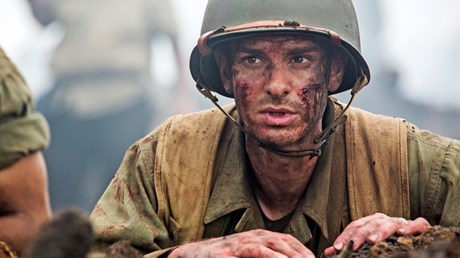Mel Gibson’s new film raises questions about religious liberty and moral conviction amidst national turmoil.

After scandals and controversy led to his very public downward spiral and subsequent exile from Hollywood a decade ago, Mel Gibson has kept a pretty low profile. The Oscar-winning actor and director of Braveheart and one-time evangelical darling (for directing the blockbuster Passion of the Christ) has been gradually redeeming himself of late, beginning with an acclaimed starring turn in Blood Father this summer.
Hacksaw Ridge, Gibson’s first directorial outing since 2006’s Apocalypto, should expedite his return to respectability. The World War II epic, which received a 10-minute standing ovation when it premiered in September at the Venice Film Festival, is artistically masterful and thematically timely. It is sweeping and surprising cinema of the sort that feels more and more rare in Hollywood’s current funk of recycled franchise junk.
A title with the word “hacksaw” in it is perhaps appropriate for a film that is jarringly two-halved, in many senses. The first is literal: The film is structured in two parts. The first half is set in rural America, in homes and army bases and courtrooms; relative civilization. The second is set on Okinawa in World War II, far from civilization and love and peace; relative chaos. When the shift happens from the first to the second half it is bloody and bracing.
Depicting the pivotal battle of Hacksaw Ridge in April–May 1945, the film’s brutal second half contains some of the most visceral and well-choreographed cinematic battle scenes since the bar-raising opening of Saving Private Ryan. Between the in-your-face violence and a structure that draws attention to itself, Hacksaw Ridge reminded me of a Quentin Tarantino film, particularly (in a weird way) …
Source: Christianity Today Most Read